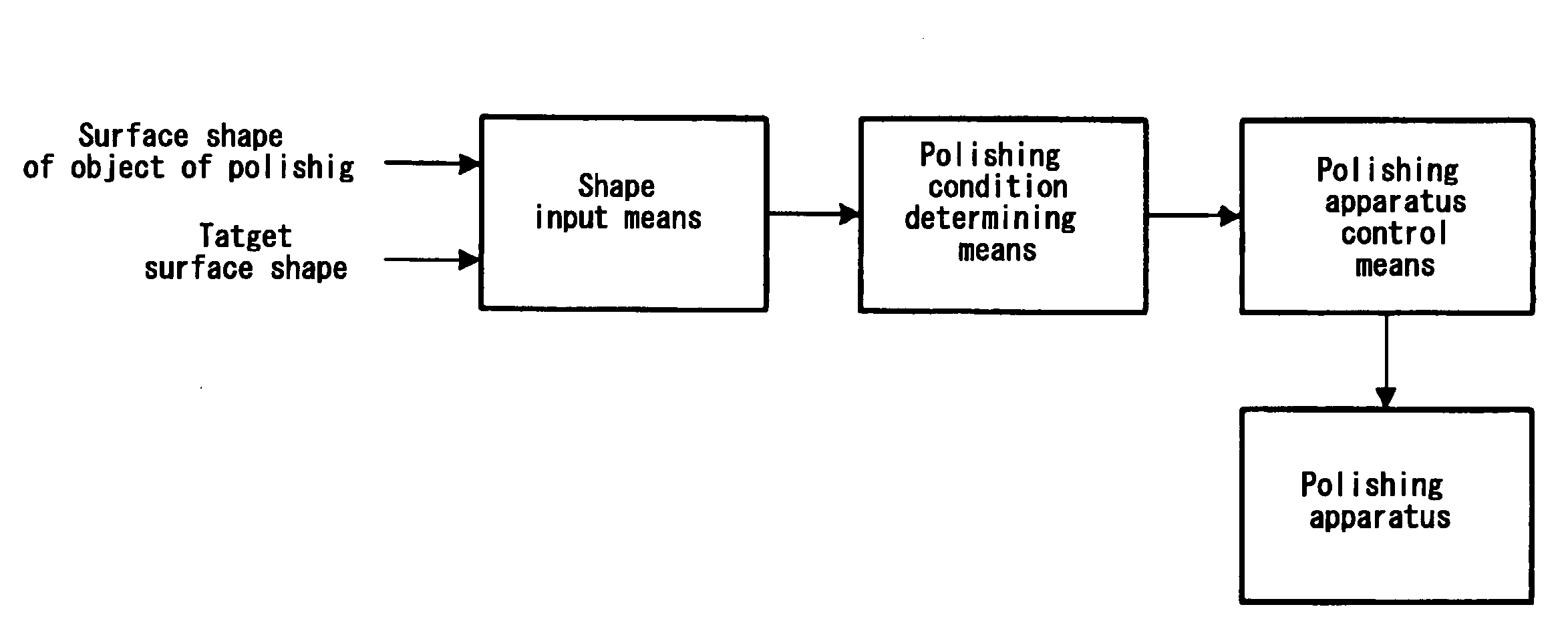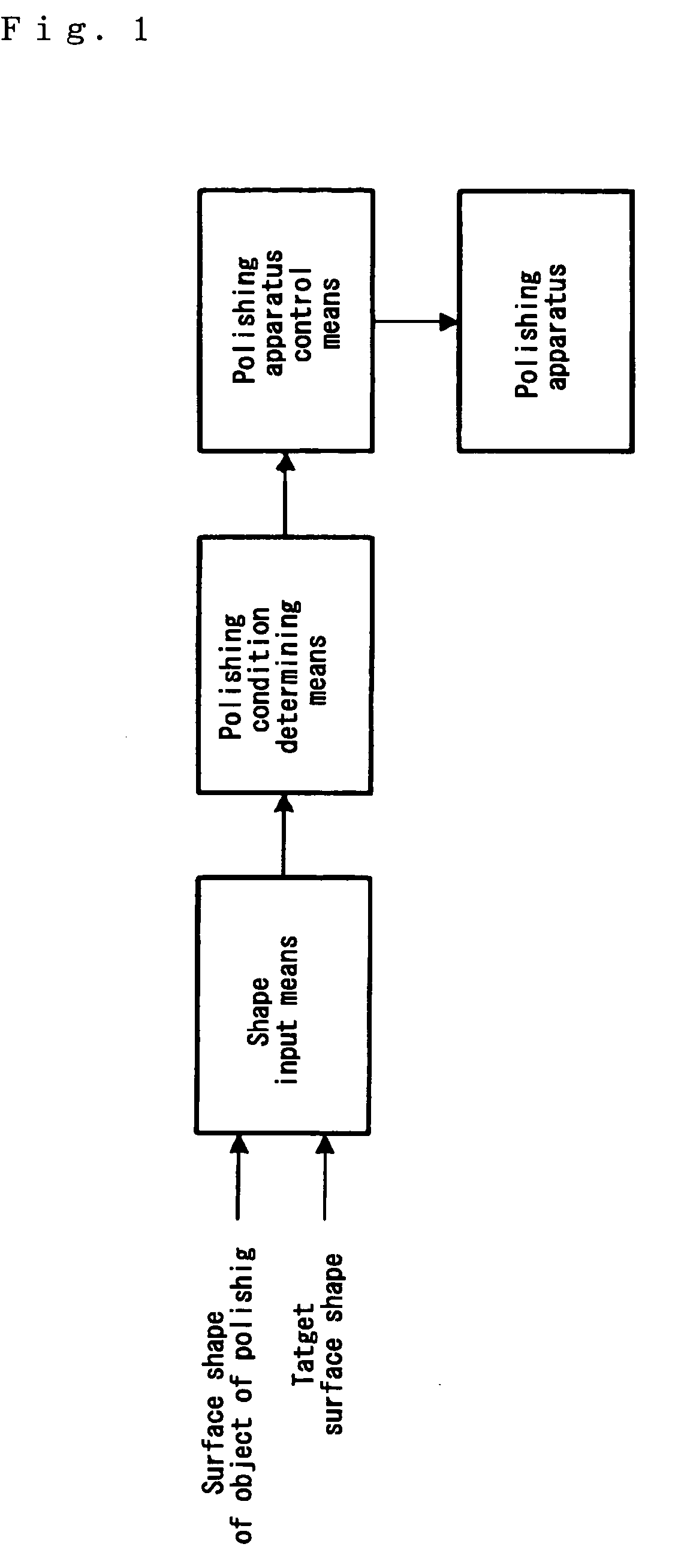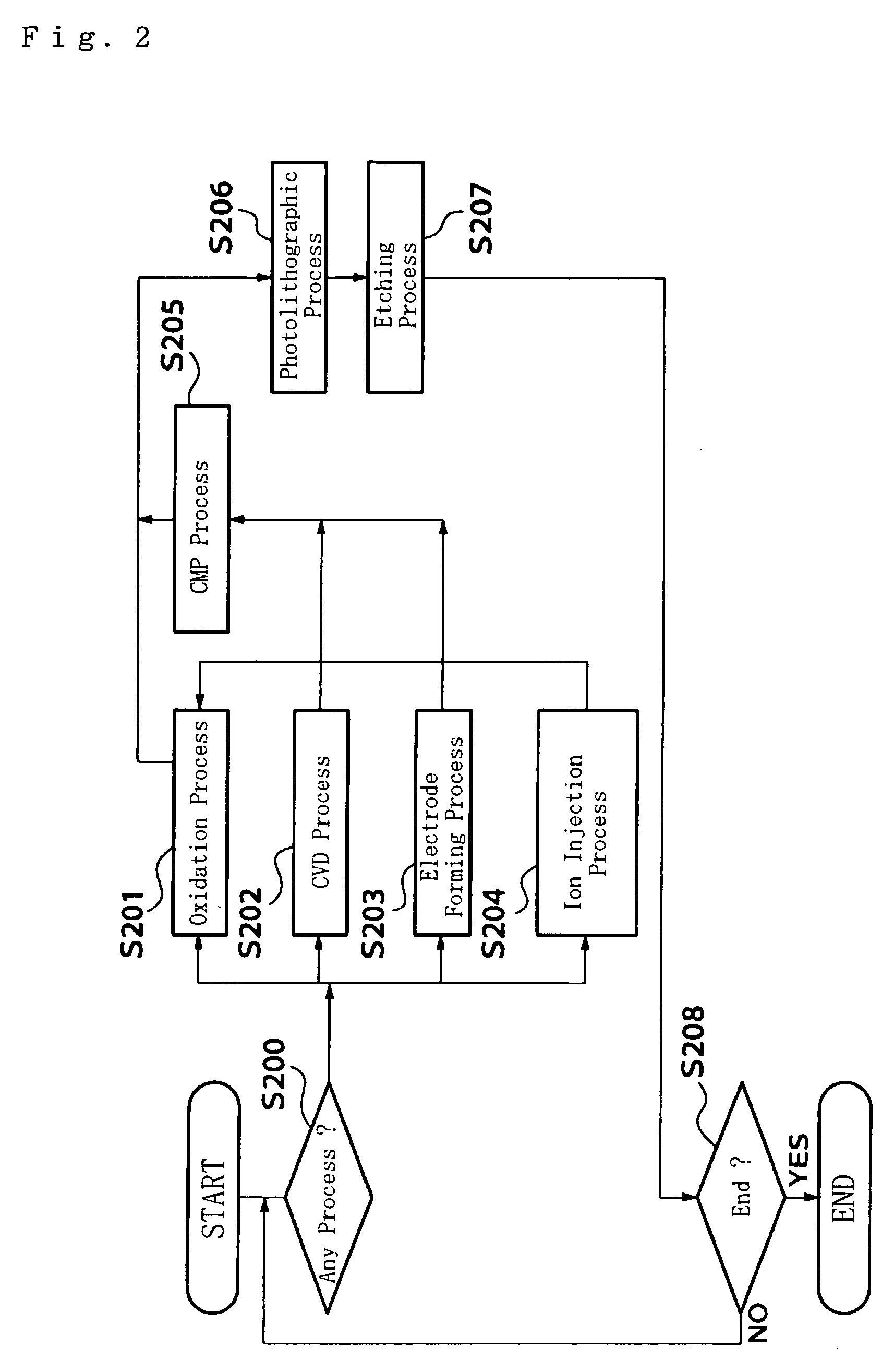Working shape prediction method, working requirement determination method, working method, working system, method of manufacturing semiconductor device, computer program, and computer program storage medium
a technology of working shape and working requirement, applied in semiconductor/solid-state device testing/measurement, manufacturing tools, lapping machines, etc., can solve the problems of wiring interruption and drop in electrical capacitance, individual processes involved in semiconductor manufacturing processes have become more numerous and complicated, and achieve the effect of quickly determining working conditions
- Summary
- Abstract
- Description
- Claims
- Application Information
AI Technical Summary
Benefits of technology
Problems solved by technology
Method used
Image
Examples
embodiment 1
(Embodiment 1)
[0107]The polishing of a wafer with a diameter of 200 mm which had a Cu pattern inside was performed using a polishing apparatus in which the polishing pad was smaller than the wafer. This polishing was performed using an annular polishing pad with an external diameter of 150 mm and an internal diameter of 50 mm under the following conditions: head rpm 400 rpm, wafer rpm 200 rpm, polishing time 60 sec, slurry 100 ml (RD98052, FUJIMI Incorporated). The wafer had a film thickness of 1.5 μm, and the initial film thickness was extremely uniform.
[0108]Six wafers were polished under different polishing conditions determined by combinations of the swinging conditions (polishing starting position, amount of swinging), and six relationships between the polishing conditions constituting elements and the worked shape were determined. The polishing time was 60 seconds in all six sets of conditions. The relationships between the swinging conditions and the worked shapes (amounts of...
embodiment 2
(Embodiment 2)
[0114]Combinations of four of the conditions selected as conditions in Embodiment 1 were converted into a single swinging pattern from the probability of the presence of the center of the polishing pad. FIG. 10 shows the results obtained. In FIG. 10, the horizontal axis indicates the center coordinates of the head (corresponding to the wafer position), and the vertical axis indicates the swinging velocity. The triangles indicate the calculated values, and indicate swinging at the corresponding swinging velocity at the specified head center coordinates. The pattern shown in FIG. 10 indicates swinging at a swinging velocity of 364 mm / min when the head center coordinates are between 23 mm and 38 mm, swinging at a swinging velocity of 1092 mm / min when the head center coordinates are between 38 mm and 53 mm, and swinging at a swinging velocity of 401 mm / min when the head center coordinates are between 53 mm and 68 mm.
[0115]When polishing was performed under these conditions...
embodiment 3
(Embodiment 3)
[0116]The polishing of a wafer with a diameter of 200 mm in which a Cu pattern was formed inside was performed using a polishing apparatus in which the polishing pad was smaller than the wafer. Cu wafers from a different wafer lot from that used in Embodiment 1 were used in the polishing of this embodiment. The wafer of this lot had a protruding shape in which the film thickness of the wafer was 1.6 μm in the central portion of the wafer, and 1.45 μm in the edge portions of the wafer.
[0117]For the wafers having this protruding film thickness distribution, the target residual film thickness was set at 0.9 μm, and conditions for realizing a flat worked shape were determined using combinations of the six sets of polishing conditions constituting elements used in Embodiment 1. The simulation method was the same as that used in Embodiment 1. As a result, it was found that polishing for 24 seconds under condition 1, 6 seconds under condition 3 and 30 seconds under condition ...
PUM
 Login to View More
Login to View More Abstract
Description
Claims
Application Information
 Login to View More
Login to View More - R&D
- Intellectual Property
- Life Sciences
- Materials
- Tech Scout
- Unparalleled Data Quality
- Higher Quality Content
- 60% Fewer Hallucinations
Browse by: Latest US Patents, China's latest patents, Technical Efficacy Thesaurus, Application Domain, Technology Topic, Popular Technical Reports.
© 2025 PatSnap. All rights reserved.Legal|Privacy policy|Modern Slavery Act Transparency Statement|Sitemap|About US| Contact US: help@patsnap.com



